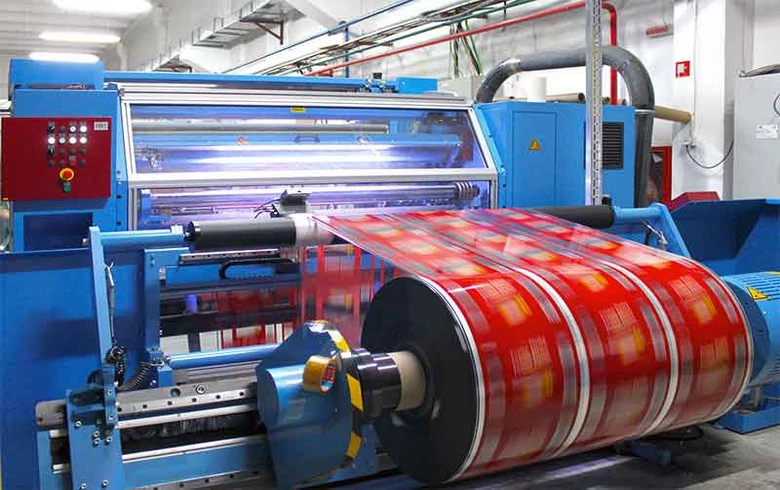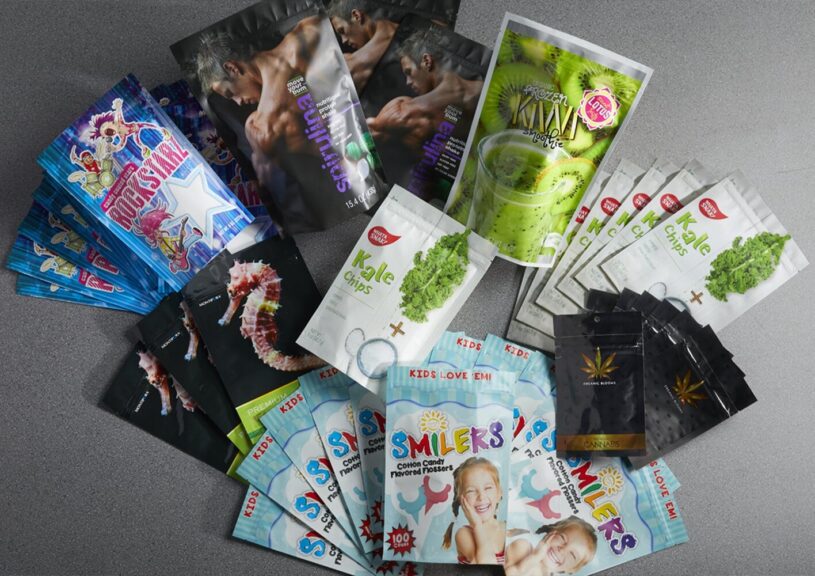In today’s fast-paced market, the concept of flexible packaging has become a beacon of innovation and practicality. This form of packaging, which encompasses a variety of non-rigid formats, has revolutionized product packaging.
From its humble beginnings to its current prominence, flexible packaging has evolved to meet the dynamic needs of both consumers and manufacturers, becoming a vital part of the global packaging industry.
Characteristics of Flexible Packaging
At its core, flexible packaging primarily utilizes materials such as plastics, foils, and paper. The unique amalgamation of these materials offers distinctive properties:
- Lightweight and durable. Flexible packaging is remarkably light yet strong enough to protect products from environmental factors.
- Customizable. It can be tailored in size, shape, and functionality, catering to a wide range of products and industries.
- Versatility. Its ability to combine different materials allows for varying degrees of rigidity, barrier protection, and visual appeal.
Manufacturing Process

The flexible packaging manufacturing process is a blend of technology and innovation. Key stages include:
- Material selection. Choosing the right combination of materials to match the product’s protection needs and shelf-life requirements.
- Printing and design. Utilizing advanced printing techniques for high-quality graphics, which are crucial for branding and consumer appeal. Techniques like rotogravure and flexography are commonly used.
- Lamination and coating. Applying layers and coatings to enhance barrier properties and durability.
Advantages of Flexible Packaging
The rise of flexible packaging can be attributed to its numerous advantages:
- Environmental benefits. It reduces material usage significantly compared to rigid packaging. Additionally, the lighter weight leads to lower transportation costs and, consequently, a reduced carbon footprint.
- Convenience. Features like resealability, easy opening, and flexible storage options add immense value for consumers.
- Marketing and branding. The high-quality printing and design flexibility offered by flexible packaging create compelling branding opportunities. This visual appeal on the shelf can be a decisive factor for consumer purchases.
Applications

The flexible packaging industry overview reveals its extensive use across a multitude of sectors, each benefiting from its unique properties:
- Food and beverages. Perhaps the most prolific user of flexible packaging, this sector utilizes it for everything from snack bags to resealable pouches for liquids. The barrier properties of flexible packaging preserve freshness and extend shelf life.
- Pharmaceuticals. Flexible packaging in the pharmaceutical industry offers benefits like tamper-evidence, child resistance, and individual dosing capabilities. It’s used for packaging pills, powders, and gels.
- Personal care products. Shampoos, lotions, and other personal care items often use flexible packaging for its convenience and efficient use of space.
- Tailored solutions. Different industries require specific packaging features — from UV protection in personal care to gas barriers in food packaging. The flexibility of this packaging type allows for custom solutions that meet these diverse requirements effectively.
Flexible packaging offers a diverse range of options tailored to specific products, adapting to various needs from protection to marketing appeal. For instance, in the context of chips packaging, there are multiple types of flexible packaging solutions available. These range from the traditional pillow bags, known for their cost-effectiveness and convenience, to stand-up pouches that offer enhanced shelf presence and resealable features. High-barrier films are often used to preserve the freshness and crispiness of the chips, while ensuring the packaging is lightweight and easy to transport.
Another innovative option is the use of metalized films, which not only protect the chips from light and moisture but also give the package a premium, eye-catching look. Each of these types of chips packaging is designed to meet specific consumer needs, whether it’s convenience, product freshness, or visual appeal on the store shelf.
Trends and Innovations
The flexible packaging industry is continuously evolving, driven by both technological advancements and consumer demands:
- Sustainable materials. There’s a growing trend towards using biodegradable and recyclable materials to reduce environmental impact. Innovations include plant-based plastics and improved recycling processes.
- Smart packaging technologies. Incorporating technologies such as QR codes and RFID tags, flexible packaging is becoming smarter. These additions enhance customer engagement and provide valuable data on product usage and supply chain management.
- Design innovations. Advances in material science are enabling the creation of even lighter, more durable packaging with enhanced functionality, like improved barrier properties and ease of use.
Challenges and Considerations

Despite its advantages, the flexible packaging industry faces significant challenges:
- Production and recycling complexities. The multi-material nature of many flexible packages complicates recycling. Different materials bonded together can hinder the separation process, which is essential for recycling.
- Regulatory and safety considerations. In sectors like food and pharmaceuticals, packaging must meet stringent safety standards. Compliance with contamination, material safety, and quality control regulations is essential.
- Innovative solutions. There’s a need for developing innovative methods that simplify the recycling process and ensure safety standards, without compromising the packaging’s functionality and protection capabilities.
Environmental Impact and Sustainability
Flexible packaging’s ecological footprint is a point of critical analysis:
- Reduced material use. Flexible packaging often uses less material than traditional packaging forms, which translates to lower environmental impact in production and disposal.
- Efforts for sustainability. The industry is actively seeking ways to make flexible packaging more sustainable. This includes using mono-materials that are easier to recycle, developing biodegradable materials, and improving recycling processes.
- Eco-friendly practices. Manufacturers also explore practices like lifecycle assessments to understand and minimize the environmental impact throughout a product’s life.
Conclusion
Flexible packaging represents a significant advancement in the packaging sector. Its versatility, efficiency, and adaptability to various industry needs make it a preferred choice in many fields. However, the challenges of recycling and regulatory compliance are significant hurdles that the industry is striving to overcome. Innovations in material science and sustainability efforts are crucial in shaping the future of flexible packaging.
As it stands, flexible packaging is poised to continue its growth, balancing functionality with an increasing emphasis on environmental responsibility. Its role in the global market is expected to evolve, reflecting the industry’s commitment to innovation and ecological awareness.
